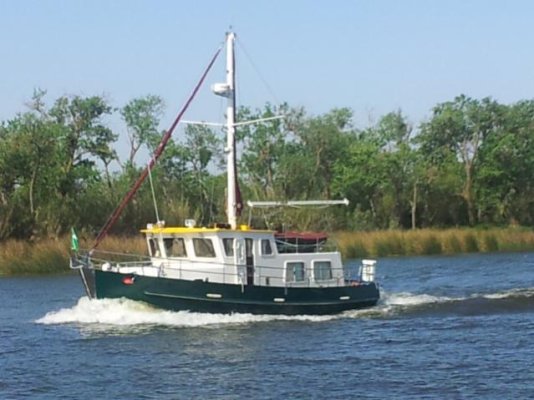boating rich
Veteran Member
Hi folks. My wife and I keep batting around the idea of dragging around less boat, but going from Marina to Marina and finding overnight accommodations on land. That is not the crazy part. Given the go fast boats from a different time have no real market, what if we bought a cigarette, Baja, or formula and repowered it to run slow with either smaller diesels of outboards. They have a narrow beam, light weight and long lines so you would think they would glide through the water without much resistance. Given you start with a 35 to 45 foot hull they have a good amount of waterline for displacement speeds. How do you think these boats would run at slower speeds? They clearly were not designed like a displacement sailboat and were designed to plane. Add to the idea, we could even look into running one of the electric motors / batteries and going quiet. I know part of the madness is that we couldn’t sell it but it would be an interesting endeavor to play with modern technology.


